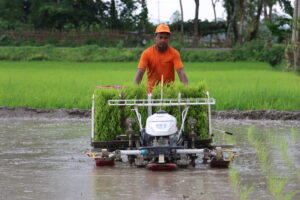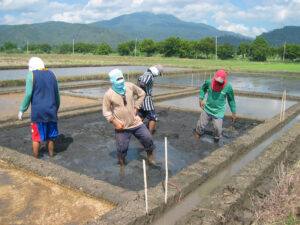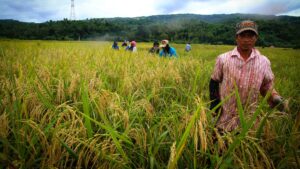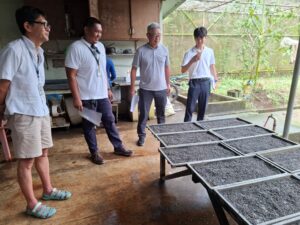Connected Breeding, a new breeding strategy by IRRI, is set to revolutionize rice breeding by unlocking complex genetic diversity from gene banks and integrating it into elite breeding genotypes. This cutting-edge approach overcomes the limits of traditional methods, accelerating the development of climate-resilient, salt- and flood-tolerant rice for the world’s most vulnerable regions.
By Waseem Hussain, Mahender Anumalla, Margaret Catolos, Joie Ramos, Ma Teresa Sta. Cruz and Myrtel Valenzuela
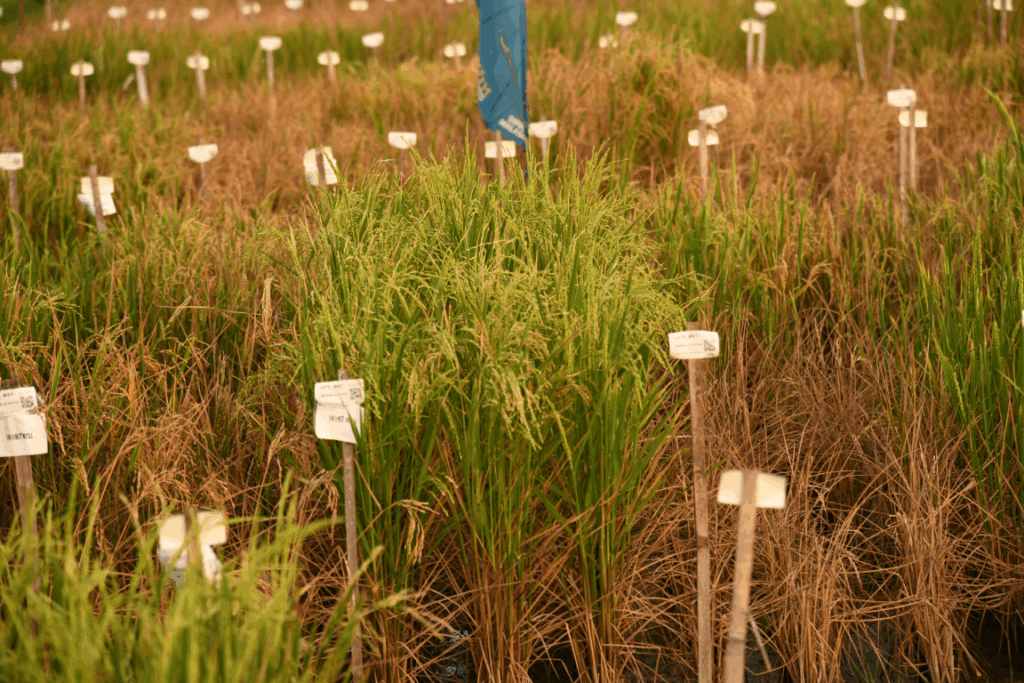
Salinity threatens Asia’s rice bowl
More than 40% of the global population lives in coastal areas, many of which are home to small-scale farmers growing rice in saline environments. South and Southeast Asia, regions that produce about 65% of global rice production, are increasingly affected by saltwater intrusion due to climate change. Countries such as India, China, Bangladesh, Vietnam, and Indonesia collectively have around 16–20 million hectares of rice grown in saline-prone ecosystems. These areas face growing risks from rising sea levels, cyclones, and seasonal flooding.
A stark example is the Paradip Cyclone of October 1999, which formed in the Andaman Sea and became one of the most severe storms to strike Odisha, India, in the 20th century. The cyclone caused widespread saltwater contamination of rice fields, which became less productive or barren. Similar cases continue to be reported in 2024, as saline intrusion silently transforms formerly fertile fields into unproductive land.
By 2050, rice demand in these areas is expected to increase by 87%. Meeting that demand will require adapting saline-prone environments for sustainable rice production.
A shift in salinity breeding approaches
Researchers have found important genes and traits that help plants tolerate salt, but progress has been slow. Traditional methods have used ideal testing conditions, limited genetic diversity, and focused on single genes as a silver-bullet solution. These factors have made it hard to achieve real-world results.
To improve this situation, IRRI has created Connected Breeding, a strategy that brings diverse genetic variations into the main breeding program. This approach lets breeders work with complex traits, like salinity tolerance, even if they don’t fully understand all the genes involved.
Connected Breeding combines genomics, phenotyping, and data-driven selection. This helps improve and diversify rice populations. Instead of looking for a single “silver bullet” gene, this method helps develop stronger, climate-resilient rice varieties.
How it works
At the core of Connected Breeding is a bridge breeding scheme (Figure 1). Donor lines from gene banks are crossed with elite cultivars, and through cycles of genomic selection, speed breeding, and phenotyping, high-performing lines are selected. This minimizes linkage drag and ensures that new diversity is introduced without compromising yield or other key traits.

Proof of concept and validation
Connected Breeding has already been applied to develop submergence-tolerant rice varieties that can survive underwater for more than 21 days. Building on that success, the approach is now being used to enhance salinity tolerance.
“Connected Breeding allows us to leverage the gene-bank resources in a smart way and fast-track the development and release of rice varieties that can withstand salinity and flooding. This will help farmers better cope with climate-related challenges,” said Dr. Waseem Hussain, IRRI Senior Scientist and Lead of the Salinity and Flooding Breeding Program.
With support from a new U.S. government grant, IRRI, Texas Tech University, and the Bangladesh Rice Research Institute (BRRI) are working together to apply Connected Breeding to over 1.2 million hectares of salt-affected rice lands in Bangladesh. This partnership is expected to significantly accelerate the development of next-generation salinity-tolerant rice varieties.
About the publication
To know more about the Connected Breeding Strategy, readers can access the publication through Anumalla et al. 2025 Salinity-tolerant rice: A sustainable solution for food security and greenhouse gas mitigation (https://doi.org/10.1016/j.cpb.2025.100518) and Revisiting FR13A for submergence tolerance: beyond the SUB1A gene (https://doi.org/10.1093/jxb/erae299)


